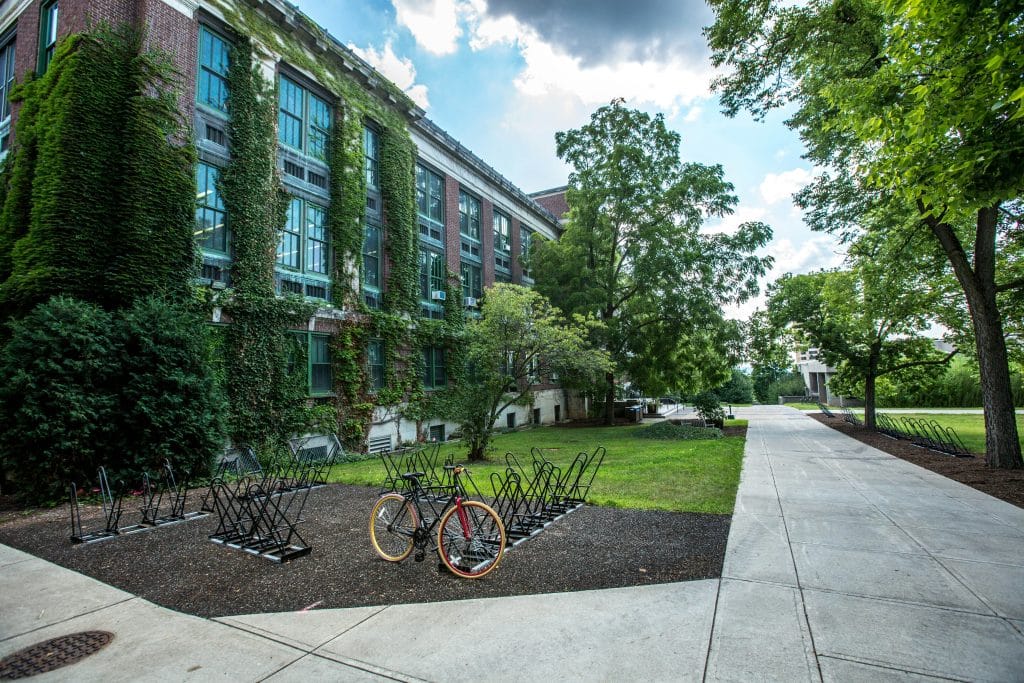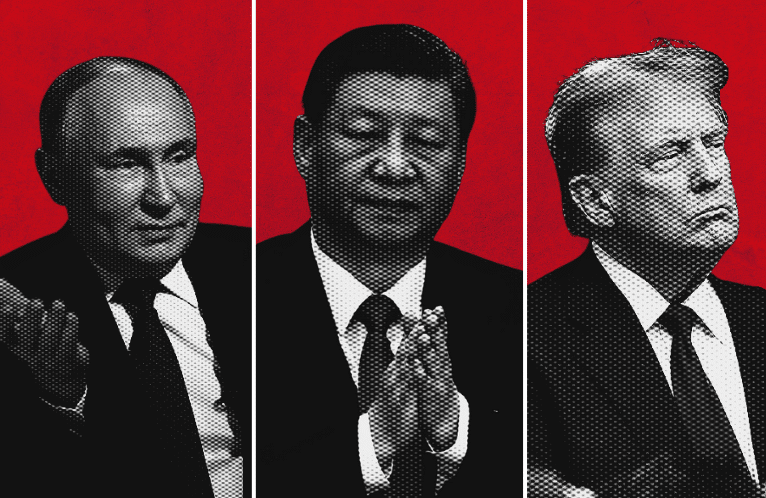Fears of a China Initiative Revival Stir Anxiety Among Chinese American Academics
Forty Years On: Looking Backward and Forward in US-China Relations
Speech at the Carter Center and Emory University Symposium on “The United States & China at 40: Seeking a New Framework to Manage Bilateral Relations”
January 16-19, 2019
Atlanta, Georgia
It is indeed a pleasure and honor to be invited to participate in this important symposium and to be a luncheon speaker today. I face the problem of those who speak at towards the end of a conference: everything has already been said—but, as the old adage goes, not everyone has said it! I have learned a lot from listening to the previous two days of proceedings from many experienced and wise people who have devoted much of their lives and careers to advancing the US-China relationship. That we have such people on both sides (and indeed those here at the symposium are just the tip of the iceberg) is testimony to the importance of the relationship. Our respective communities of China hands and America hands have never been more important than at the current juncture in the relationship, and we are truly in need of new ideas (and a new generation) for managing this all-important relationship going forward.
****
Before giving you my own perspectives and suggestions on this question, let me begin with some personal recollections. Commemorating the 40th anniversary of normalization has personal meaning for me—as I was fortunate enough to be a witness to the event and, in a very small way, part of the process leading up to it.
Forty-two years ago in early 1977 I was stunned over a coffee break at a meeting in the State Department (where I was temporarily working after graduating from college) when Michel Oksenberg (President Carter’s and Dr. Brzezinski’s chief China advisor) asked me if I wanted to transfer to the NSC staff and be his assistant, which I did until the end of 1978. This was exactly the period in the run-up to the normalization of relations. To be sure, there was much I was not privy to, but Mike had me work on a number of issues related to the post-normalization period: the “claims/assets” issue; prospective educational and scientific exchanges; export control policy; the post-recognition framework for US relations with Taiwan (examining Japan’s, Germany’s and other models for unofficial relations); and mapping out a potential agenda of bureaucratic interactions between the Chinese and American bureaucracies. The latter was one of Mike’s particular passions—both as a scholar of bureaucratic politics and because he anticipated that our two bureaucracies needed to replace their adversarial Cold War missions with more positive bilateral interactions.
Needless to say, this was an exceptional opportunity for a young (25 year-old) person—and it gave me an up-close perspective on various aspects of the complicated normalization of diplomatic relations. I left the NSC just after the announcement by President Carter and CCP Chairman Hua Guofeng, but had the honor of meeting DXP several times during his January 1979 visit to the US. I also had a minor role in his schedule—as Mike and I shared a passion for country and bluegrass music, we were discussing some ideas for exposing Deng to American culture and I jokingly suggested “Why don’t you take him to the Grand Ole Opry?” Mike immediately seized on the idea, and it was programmed into Deng’s tour across the United States. I doubt that Deng came away being a fan of bluegrass, but it was certainly something different than he had experienced in his career previously! For those of you who knew Mike, this may have been the next best thing to getting Deng to a Michigan football game.
Personally, my entire adult and professional life benefited from normalization. I was in one of the first groups to study in China in 1979 (Nankai University in Tianjin), then I studied at Fudan University in 1982, and Peking University from 1983-85. I also subsequently was a visiting scholar in five different institutes at the Chinese Academy of Social Sciences), have participated in countless exchanges over the past four decades (counting Hong Kong, I have visited China every single year since 1979), have lived in China for about six years altogether, and have visited 27 of 31 provinces. So, President Carter’s bold decision opened the doors to China in my personal and professional life.
****
I am sorry to indulge in these personal reminiscences, but this event has caused me to reflect on my own life. Now let me turn to US-China relations and offer some brief observations on where we have come from, where we are at present, and where we might be going
It is no secret that the Sino-American relationship today is highly stressed. This should not be a surprise to anyone, especially China specialists or scholars of international relations, given the complexity of the relationship across so many issue areas as well as what has been referred to as the “Thucydides Trap”—essentially a description of the structural and psychological challenges that a rising power presents to an established power. US-China relations are indeed at a low point today…. but they have been “lower” before—notably for several years following the 1989 Tiananmen Incident. The relationship has also previously been shaken by other traumatic events—the 1995-96 Taiwan Strait Crises, the tragic 1997 bombing of the Chinese Embassy in Belgrade, and the 2001 EP-3 Incident. Each of these events sent the relationship into a temporary tailspin, but in each case it was able to recover through the hard work of diplomacy.
The current downturn is, however, fundamentally different—as the challenge is not how to rebuild interactions following an incident. Today the challenge is much deeper and more systemic in nature. That is, in virtually every dimension of the relationship competitive dynamics:
- In the military-security domain, both militaries view the other as threatening, and a clear “security dilemma” is apparent. Both militaries arm and train themselves with potentially fighting the other.
- In terms of the regional security architecture in Asia, they possess countervailing visions and institutions. China has the SCO, CICA, bilateral “strategic partnerships,” espouses “cooperative” security and is explicitly opposed to alliances as a “relic of the Cold War.” The Chinese logic is zero-sum, i.e. Beijing argues that alliances were formed to counter the USSR, and alliances should have disappeared when the Cold War ended and the Soviet Union disintegrated. By contrast, the US believes in alliances, maintains 38 worldwide and five in Asia plus a network of security partnerships. The American logic is positive sum: they do not have to be directed at an adversary, but rather exist for collective security and maintaining regional order and peace. Countries bond together as allies also because they share values and political systems in common.
- In the realm of trade and investment, the frictions are readily apparent in the current tariff war, but also are deeper and more systemic. It is precisely the state-directed character of the Chinese economy that the US objects to. Further, FDI in both directions is increasingly subject to blockage on “national security” grounds, while American export controls remain extensive and are aimed at blocking the export of various technologies to China (China has long resented this).
- In the realm of domestic politics, each side increasingly views the other as “subversive.” China has a variety of campaigns aimed at countering “foreign hostile forces” (jìngwài díduì shìli 境外敌对势力)—codeword for the United States and other democratic countries. Document No. 9 (中发九号) of 2013 is a case in point. Meanwhile, ironically, in the United States, a similar dynamic has arisen with growing concerns about so-called “influence activities” carried out by various elements of China’s party-state.
- Values and norms have always been different between our two societies and systems, but they seem to have become more divisive and less convergent over time.
- Another facet of the increased frictions are a variety of American professions that have become increasingly frustrated by the increased controls placed on them in China: media, scholars, NGOs, government public diplomacy organs, cultural exchange organizations, private foundations, and the business community. These increased controls have turned a variety of American constituencies which used to be in favor of engagement with China into constituencies that are now increasingly alienated from China. China has managed to turn substantial segments of these very constituencies which sought to work with China into groups that are very frustrated with, and embittered about, China. This is a big reason, in my view, why a new much tougher bipartisan consensus on China policy has emerged in the United States—as that is how democracies work: by constituencies. The former “pro-engagement” constituencies have increasingly turned away from China.
- Further, while it has been argued by some (most notably in the Foreign Affairs article by Kurt Campbell and Eli Ratner) that China’s failure to liberalize and democratize has contributed to this disenchantment, most who have been involved with making US Government policy towards China over the years argue that it has never really been the premise or the goal of US policy. Maybe so, maybe not, but what is true is that when China has been in its more tolerant and open periods politically (I am tempted to use the term “liberal” but that’s probably not quite correct)—and there have been a number of such periods over the past 40 years—then Americans have been attracted to work with China. Perhaps this is because of America’s longstanding “missionary impulse” towards China, which I would argue is in American DNA.
- However, China—or the CCP more specifically—refuses to be molded or conform to American liberal expectations. To me, as a scholar and observer of US-China relations, I think that these underlying differences over the nature of China’s political system has always been a key difference between the US and PRC. Sometimes pragmatic cooperation could be forged despite this fundamental difference—but a core underlying factor contributing to distrust.
- Then there are other issues that add to the predominantly “competitive” character of US-China relations today: Taiwan’s status; China’s claims to the South China Sea; the BRI (which some Americans believe is a blueprint to extend China’s geoeconomic and geopolitical control over much of the globe); different policies towards Iran; and different approaches to multilateralism and global governance.
So, there are no shortages of friction points, divergencies, and opposing positions between the US and China. And these are the reasons why the relationship has deteriorated so much in recent years. Make no mistake: it is a fundamental and qualitative change. It’s also the reason why even if the two sides can reach a trade deal, the comprehensively competitive nature of the relationship will continue to characterize US-China relations indefinitely. It’s the “new normal,” and in my view we are deceiving ourselves to think that we can go back to a predominantly cooperative relationship of extensive engagement.
This said, both sides have what social scientists call “agency”—we are not helpless and the victims of circumstances completely out of our control. We do have a considerable number of overlapping interests and we must seek to forge cooperation wherever possible. And these are not just in the international arena—but very much in the bilateral relationship.
It is worth remembering today that as the two major powers increasingly clash over a range of issues that, underneath, a vast network of ties exist between, and link together, our two societies. This is what makes the current US-China competition fundamentally different than the US-Soviet Cold War.
Forty years ago there were no students exchanged—today there are 363,341 Chinese students studying in American universities and an estimated 80,000 in American secondary schools, while there approximately 12,000 American students study in China. Trade was a paltry $2.3 billion in 1979 but ballooned to $636 billion in 2017. Forty years ago there was no U.S. commercial direct investment in China, today total accumulated stock has reached $256.49 billion. Meanwhile, China’s investment in the U.S. has grown from zero to $139.81 billion today. Despite the multiple stresses in the bilateral commercial relationship at present, epitomized by the ongoing tariff war, the commercial bonds continue to tie the countries together.
Four decades ago only a fraction of American tourists visited China, while none traveled to the United States—now large numbers visit the other country annually. Approximately 250 direct flights traverse the Pacific between the two countries every week. These people-to-people ties are buttressed by more than 201 sister city and 44 sister state-province relationships. Although exchanges between non-governmental organizations have contracted sharply since China’s 2017 NGO law went into effect, there are still about 90 American NGOs registered in China.
Over the decades dozens of bilateral agreements have been signed by the two governments to facilitate exchanges in a wide variety of fields—ranging from the sciences to athletics. American sports, popular culture, and brands remain very popular among the Chinese public—while Chinese films, literature, and arts are gaining traction with the American public.
Thus, when the two tigers are fighting—as the two governments are currently doing—it is worthwhile to reflect on the multiple societal bonds that still link the two countries together. These ties did not grow by accident—they were very much in the minds of Deng Xiaoping and President Carter when the two met at the White House in January 1979. If you go back and read the transcripts of their talks (here in the Carter Presidential Library), their conversations had as much to do with the potential building intersocietal and intergovernmental linkages as they did with the strategic imperative of countering the Soviet “Polar Bear.” Their reasoning was that the two government’s common strategic opposition to the Soviet Union at the time would one day dissipate or disappear, and when that day came the two sides would need a stronger foundation on which to base their mutual relationship.
Nonetheless, we would be mistaken to oversell these mutual bonds and underappreciate the deep sources of stress and suspicion that exist in both countries today. We ignore them at our peril. These frictions, and the perceptions that underlie them, are real—and now dominate the relationship.
But I will close by saying two things. First, we should not be afraid of competition—there is nothing intrinsically wrong with competition. Competition is not necessarily zero-sum—it is, as Harry Harding has noted in his paper for this symposium, inherently positive-sum, because it pushes competitors to excel and do their best. This is true in sports and other domains. It also permits competitive pluralism—the marketplace of good and services in commerce, the marketplace of ideas in the academic and research world, etc. And any IR scholar will tell you that competition among great powers is entirely natural and predictable.
Thus, I think the United States should actually embrace the comprehensive competition with China—as we have multiple strengths and comparative advantages that will serve us well. We also have significant weaknesses that need to be recognized. China, similarly, has strengths and weaknesses. In any sports competition, what one does is to try and utilize their strengths while exploiting the other sides’ weaknesses. Strategy is also important—as sports matches are not just a series of random interactions on the playing field or court. This is where much work needs to be done in the United States at present—assuming that we accept the competition paradigm, we need to work out sophisticated strategies for engaging in it.
This said, secondly, there is a real danger that the emergent Sino-American competition could morph into a fully-fledged adversarial relationship—unless “buffers,” “guardrails,” and “firewalls” are not created to “bound” it.
The main challenge for both sides going forward is to compete without becoming adversaries. To manage competition is the test before both governments. This is easier said than done, there is no blueprint for it, it is fundamentally different than Cold War 1.0, but both sides really have to be alert to the real dangers of drifting into a fully adversarial relationship. Among other things, it would polarize the entire Asian region and perhaps the world. There are “hawks” in both countries who seem to relish an adversarial relationship—but it is our responsibility to counter such elements.
So, we need—where possible—to re-strengthen the foundation of societal, institutional, and governmental ties that we have built over 40 years, and above all keep interacting, keep meeting, and keep talking! Dialogue and meetings should not be ends in themselves—they should accomplish something—but dialogue remains one of the best guardrails and buffers against inadvertently slipping into an adversarial relationship.
Thank you for your attention.
David Shambaugh is the Gaston Sigur Professor of Asian Studies, Political Science & International Affairs at George Washington University








